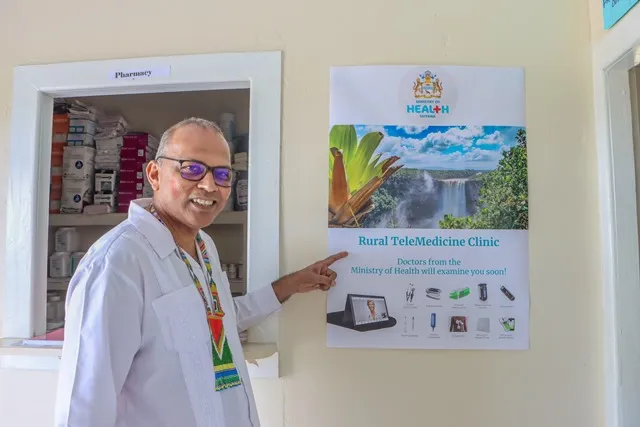Situated at the bottom of Guyana, thousands of miles away from the capital city of Georgetown lies an Amerindian village called Masakenari (Gunns Village), Region Nine home to an indigenous tribe called the Wai Wais.
Access to immediate healthcare services in emergencies is limited due to the remoteness of the village, thereby posing a risk to patients in an emergency setting.
Recognising this serious challenge, the Ministry of Health launched a Telemedicine Programme, targeting the remotest villages in Guyana including Masakenari and due to this intervention, four lives have been saved to date.
This is according to Minister, Dr Frank Anthony during the recommissioning of a community health post in Wallaba Village, Region One.
“The persons were sick and because we had the system in place, they were able to call out to Georgetown and when they called out to Georgetown, we were able to assess the patient and then send in a medevac to transport them,” he explained to a gathering in Wallaba.
Telemedicine is a two-way, real-time interactive communication between a patient and healthcare provider at different sites. It is supported by audio and video equipment and integrated medical devices that empower clinicians to evaluate, diagnose and treat patients remotely and is beneficial in Guyana’s case
The telemedicine programme was officially launched in 2022 with four Amerindian communities in Region Nine piloting the programme. It was later expanded to 25 communities in Region One, Seven, Eight, Nine and 10 with an allocation of $1.8 billion in the ministry’s $84.5 billion budget in 2023.
READ MORE: Four lives saved in Gunns Village as Telemedicine project to be expanded – DPI Guyana


